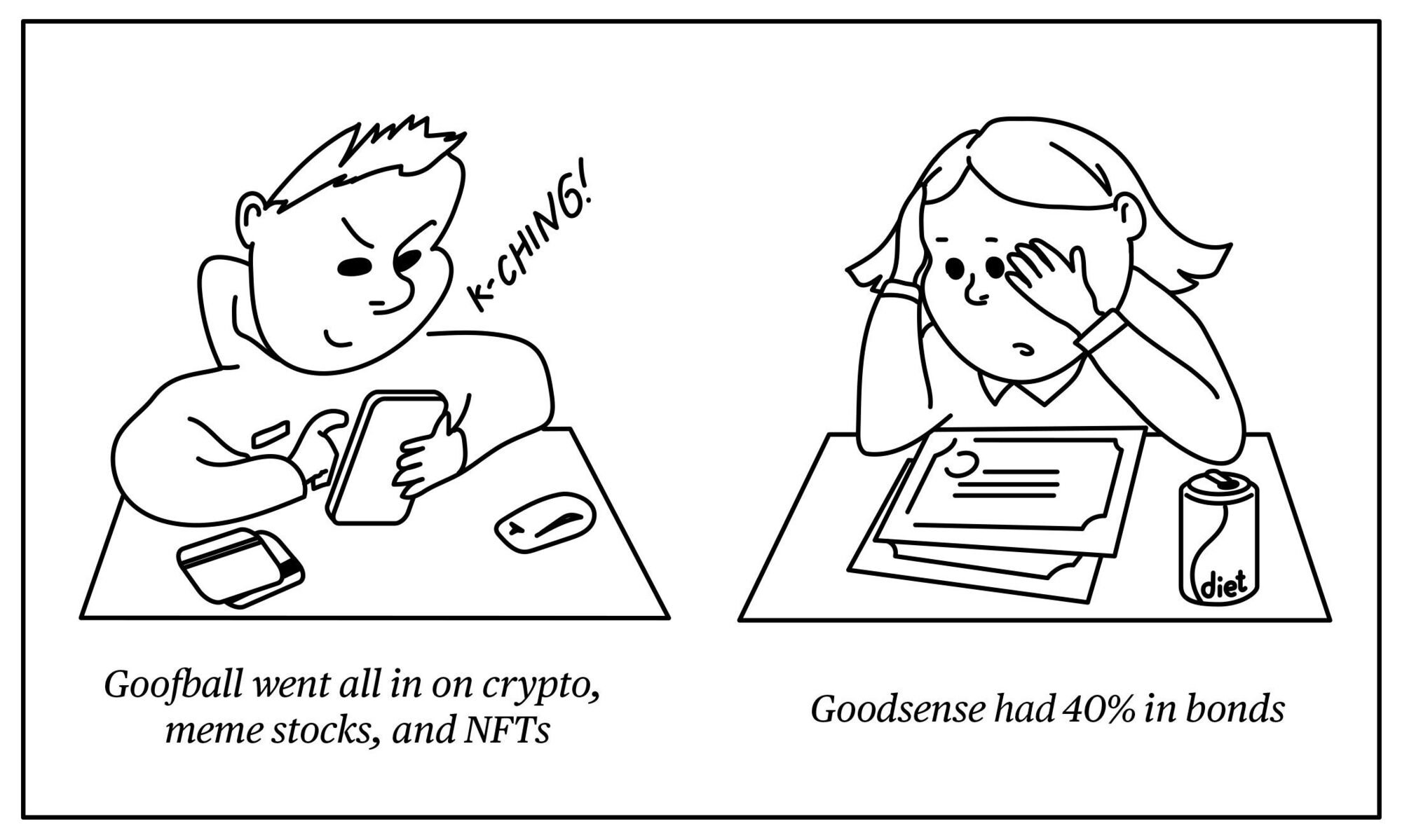DIVING INTO THE WORLD OF FIXED INCOME INVESTING
Written by: Ida Saari
DIVING INTO THE WORLD OF FIXED INCOME INVESTING
Do you have money in a savings account?
Many of us unconsciously invest in fixed income securities, since some banks pay a small interest rate on money deposited in a bank account. Especially if you commit to hold your money for a certain period without withdrawing it, some form of interest is often paid.
However, on a “regular” bank account, you hardly ever get any return, which is why inflation constantly erodes the money kept there.
And as we know, instead of a savings account you can invest your money in much better ways.
In this blog post, we will discuss what fixed income investing returns are based on, why it has become an interesting investment option in recent times, and what different options there are for those investing in fixed-income securities.
However, let's first go through how interest rates work.
Interest is the price of borrowed money, the compensation that an investor demands in return for lending their money. Compensation for the borrowed money is required because there is always a risk that the borrower may not be able to pay it back for some reason. Additionally, the borrowed amount is also out of the investor's use for a specified period.
Consider, for example, a situation where a company wants to take out a loan for a new project. It asks investors for a loan with interest which reflects the company's riskiness - the riskier the company, the higher the return required by investors, meaning the higher interest they want for their investment.
Changes in interest rates for corporate bonds depend largely on the riskiness of the companies. On the other hand, there are many other interest rate products, and all of them are influenced by changes in general market interest rates.
Market interest rates are affected by factors such as economic fluctuations, inflation, and changes in central bank interest rates.
So, what are the returns on fixed income investments based on?
Imagine a situation where a company called Screen Co, which manufactures computer screens, wants to raise funds for an upcoming investment. In collaboration with financial institutions and banks, the company issues a corporate bond, which investors can participate in by investing a certain amount of money.
Let's say Sanna decides to invest 1000 euros in Screen Co’s corporate bond.
After the issue, investors have the opportunity to trade their bonds on the secondary market. One day, Sanna reads in the news that the situation in Taiwan has escalated, and she knows that Screen Co purchases all its semiconductors from Taiwan.
Sanna deduces that Screen Co’s next financial quarter is likely to be weaker, and the company may need to take on new debt at higher interest rates.
Sanna doesn't want to carry on with the increased risk and decides to sell the bond to Roosa on the secondary market.
The greater the risk, the higher the interest rate Roosa demands in return for the loan. Alternatively, the more risk, the less she is willing to pay Sanna for the bond. A key principle in fixed income investing is that when interest rates rise, bond prices fall, and vice versa.
Roosa is willing to take on more risk but wants a higher return in exchange, which is why she agrees to pay Sanna only 900 euros instead of the 1000 euros.
A crucial element in fixed income investing, the coupon, is often a predetermined return paid annually to the bondholder, which is a fixed amount, in our case, 50 euros.
So, Roosa pays 900 euros for a bond with a face value of 1000 euros and receives a 50 euro coupon annually. Compared to Sanna who had a coupon rate of 5%, Roosa's coupon is now 5.56%.
Roosa hopes that interest rates do not rise now because otherwise, the market value of the bond she bought from Sanna will decrease.
It is also important to note that at the end of the loan term, Roosa will still be paid the nominal value, which is 1000 euros.
Interest rates are particularly interesting now - why is that?
During the COVID-19 pandemic, the global economy was stimulated by lowering the central bank policy rates, which led to a flood of “loose money” into the markets. Inflation started to rise, and due to the conflict in Ukraine, it rose up to around 10%. Central banks around the world, which aim for an annual inflation rate of 2%, tried to control the situation by raising the policy rates.
In the beginning of 21st century, investing in fixed income securities has not been particularly popular because of very low interest rates (= very modest returns). However, the situation has changed due to the aggressive rise in interest rates.
Source: The Bank of Finland
So, when should you consider investing in fixed income, and what risks are associated with it?
With stocks, the common thinking is to buy at the bottom when the stock's value is believed to be about to rise. In fixed income investing, the situation can be perceived somewhat oppositely - a favorable buying time is when interest rates are high and expected to fall. This thinking is based on the fact that bond prices are lower at such times, as seen in the example above.
However, it is important to be aware that low prices and high interest rates signal heightened risk. As rates rise, the market value of the investment falls.
A more risk-tolerant investor may prefer to invest directly in stocks or, for example, the S&P 500 index, which has historically outperformed many fixed income investments.
It should be noted that although the S&P 500 index is sometimes referred to as "risk-free," historically it actually carries more risk than many fixed income investments.
Investing in fixed income securities is less risky due to the structure of the company, which includes both equity and debt. If a company faces financial difficulties, debts are paid off before the owners receive their money. Therefore, lending is less risky than owning stocks, and that's why stocks yield better returns: owners demand higher returns than lenders because their risk of losing invested money is higher.
Various fixed income instruments
Investors have numerous options when it comes to investing in fixed income, and they are classified based on their risk profile using credit ratings.
Lower-risk options include many short-term investments and government bonds from stable and large countries.
However, it is important to note that the risk of government bonds is entirely country-specific. For example, Finnish government bonds offer a yield of just over 3%, while currently Russia offers investors more than 13% interest on its bonds. (Investing in Russian government bonds is morally questionable and very difficult due to sanctions...)
There are also several companies with better credit ratings than some countries.
Corporate bonds can be roughly divided into two main categories.
Investment-grade bonds are issued by companies with a good credit rating, making them lower-risk and therefore more moderate investment options. High-yield bonds, also known as "junk bonds," are riskier corporate bonds that can potentially offer higher returns to investors.
In addition to bonds, investors have many other options, from various securities to investment contracts. The image below illustrates the returns and risks of different investments.
Source: Danske Bank
A popular way to invest in interest rates is through funds. Instead of direct investments, funds offer diversified packages selected based on various criteria, containing bonds from different issuers, such as governments and companies.
Each fund is its own product, so their risk-return profiles vary greatly. It is also important to note that the funds can either reinvest the received coupons back into the fund or share them as 'dividends' to fund shareholders.
Bond funds can be categorized by their maturity into short-term, intermediate-term, and long-term. Short-term bond funds have maturities of approximately one year, while long-term bond funds include securities with maturities spanning several years. Intermediate-term bond funds combine both short and long-term securities.
Mixed funds are not purely bond funds but may also include stocks and other securities alongside bond instruments. They can be an option for investors seeking slightly better returns.
Could fixed income investing be suitable for you?
Source: Bloomberg
If you are looking for relatively stable, lower-risk returns on your money, it may very well be! However, we encourage diversifying your investments wisely and exploring investment options that interest you using your own judgment.
For more information and different perspectives, if you wish to learn more:
Your bank’s website, Nordnet.fi, Inderes.fi.





